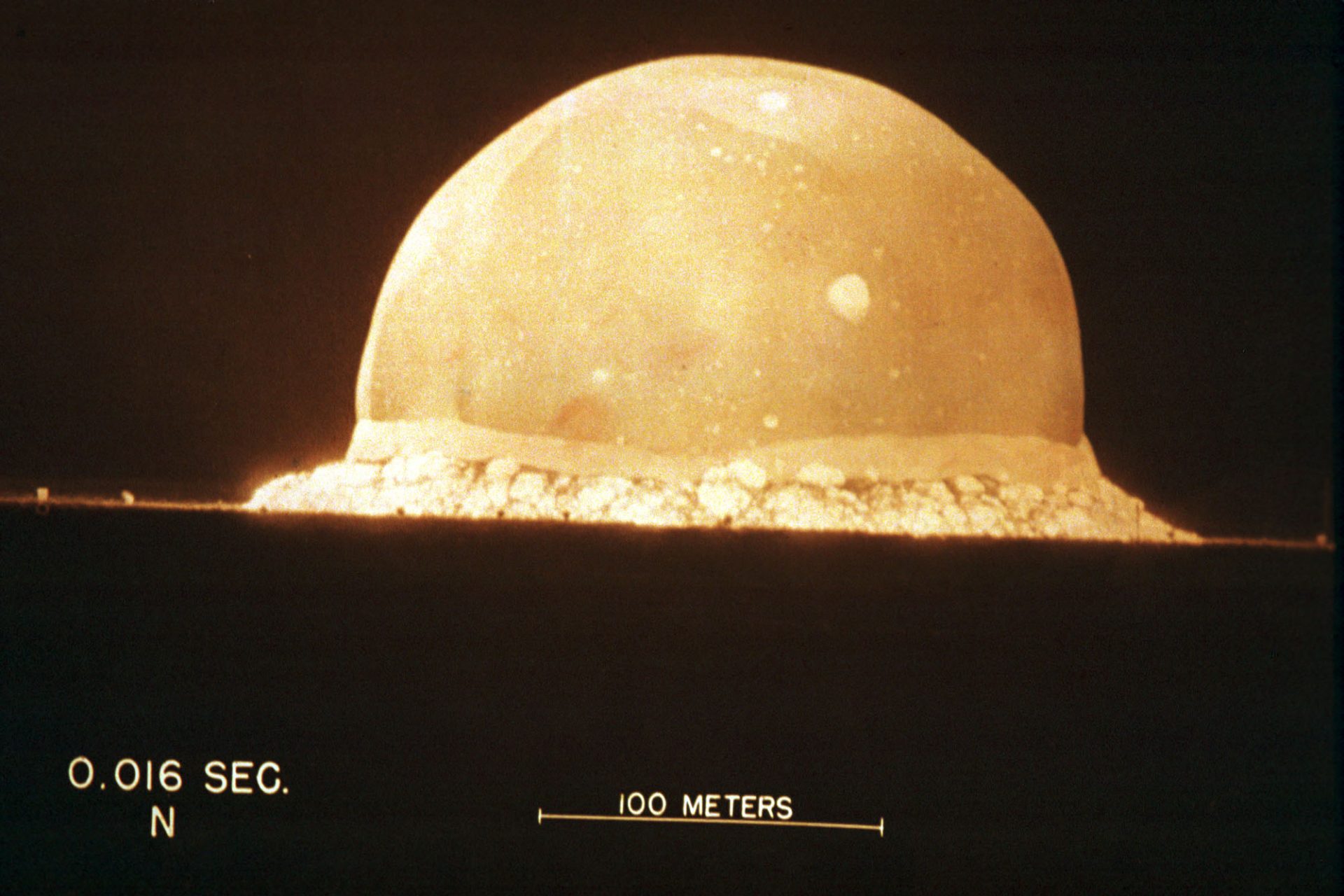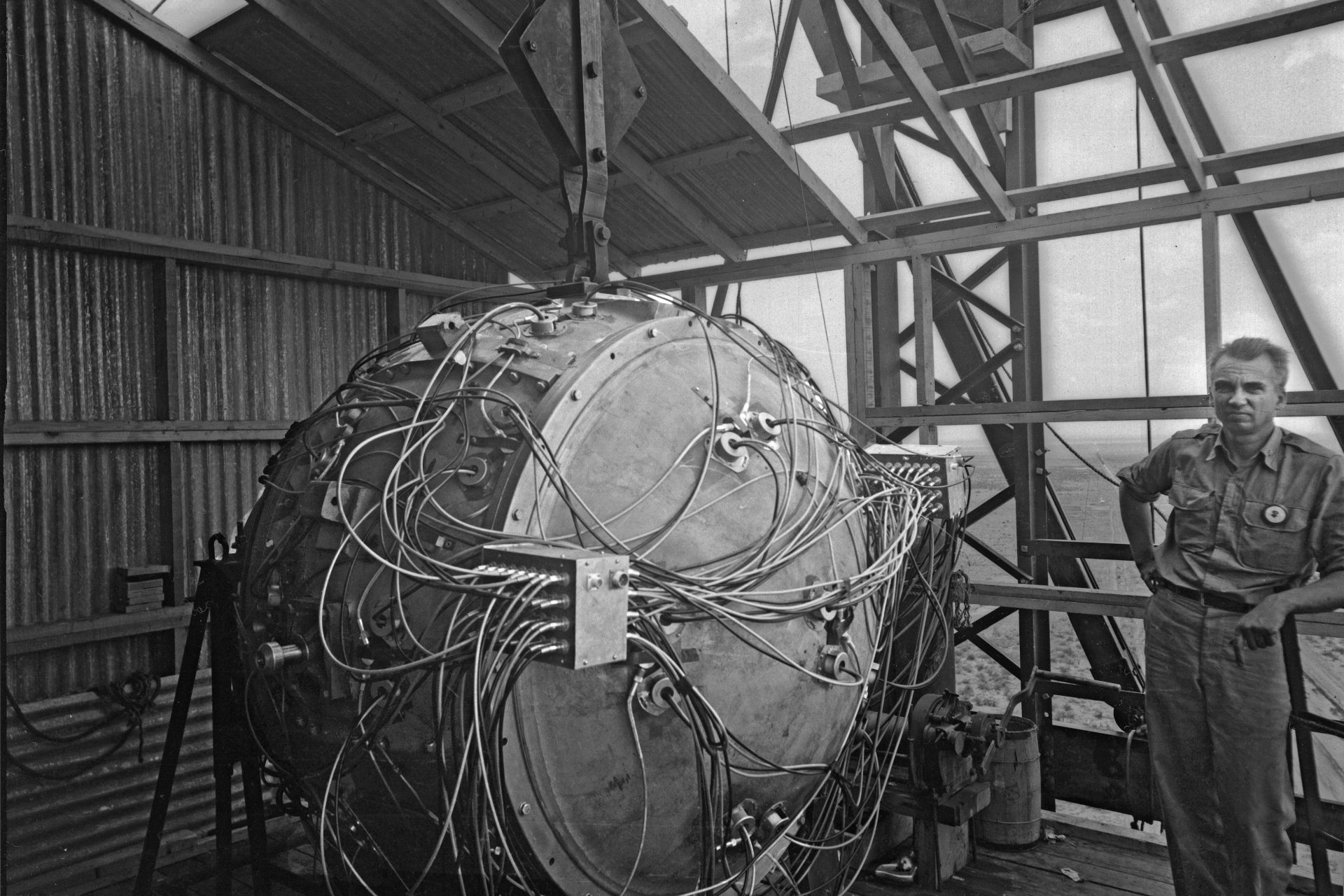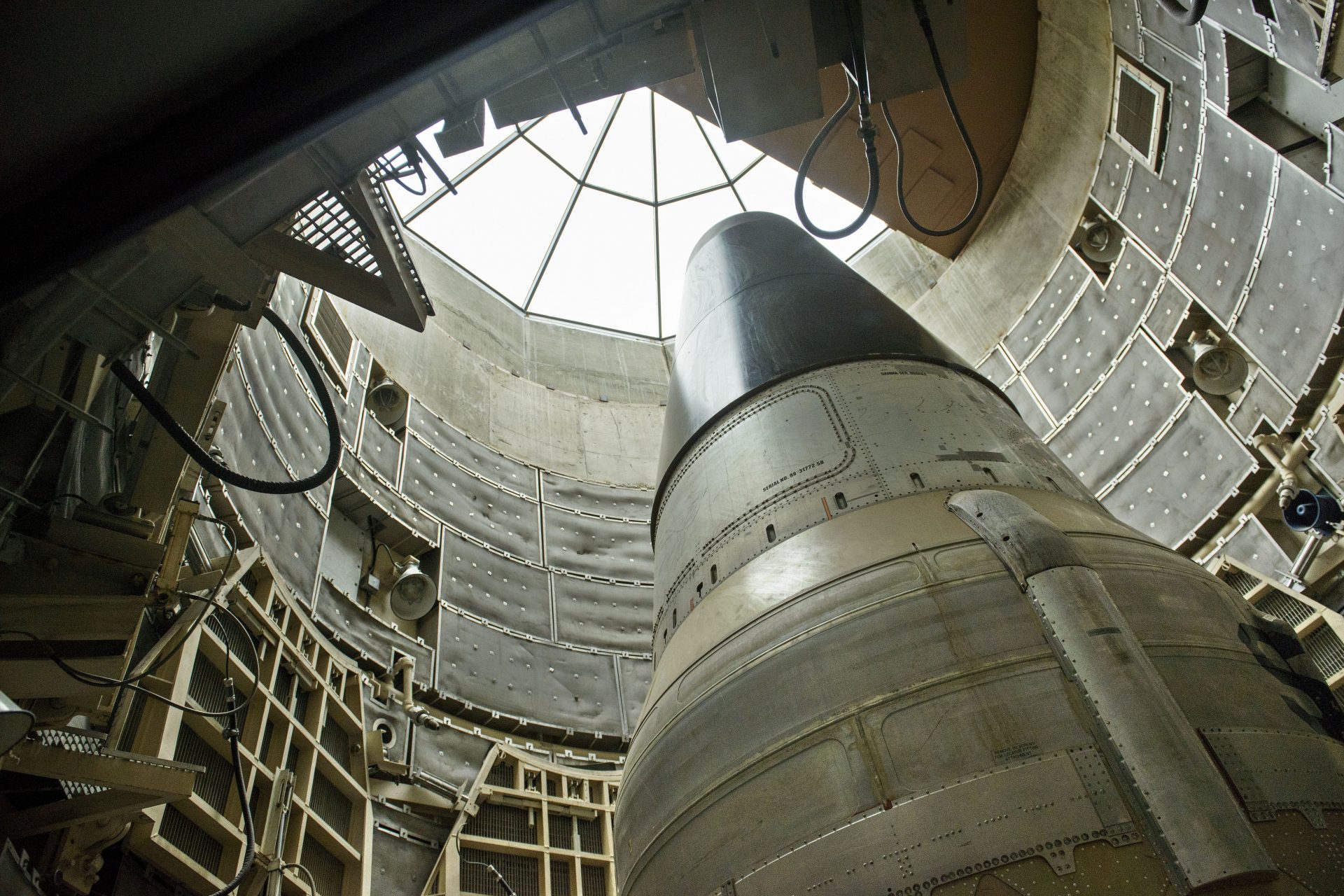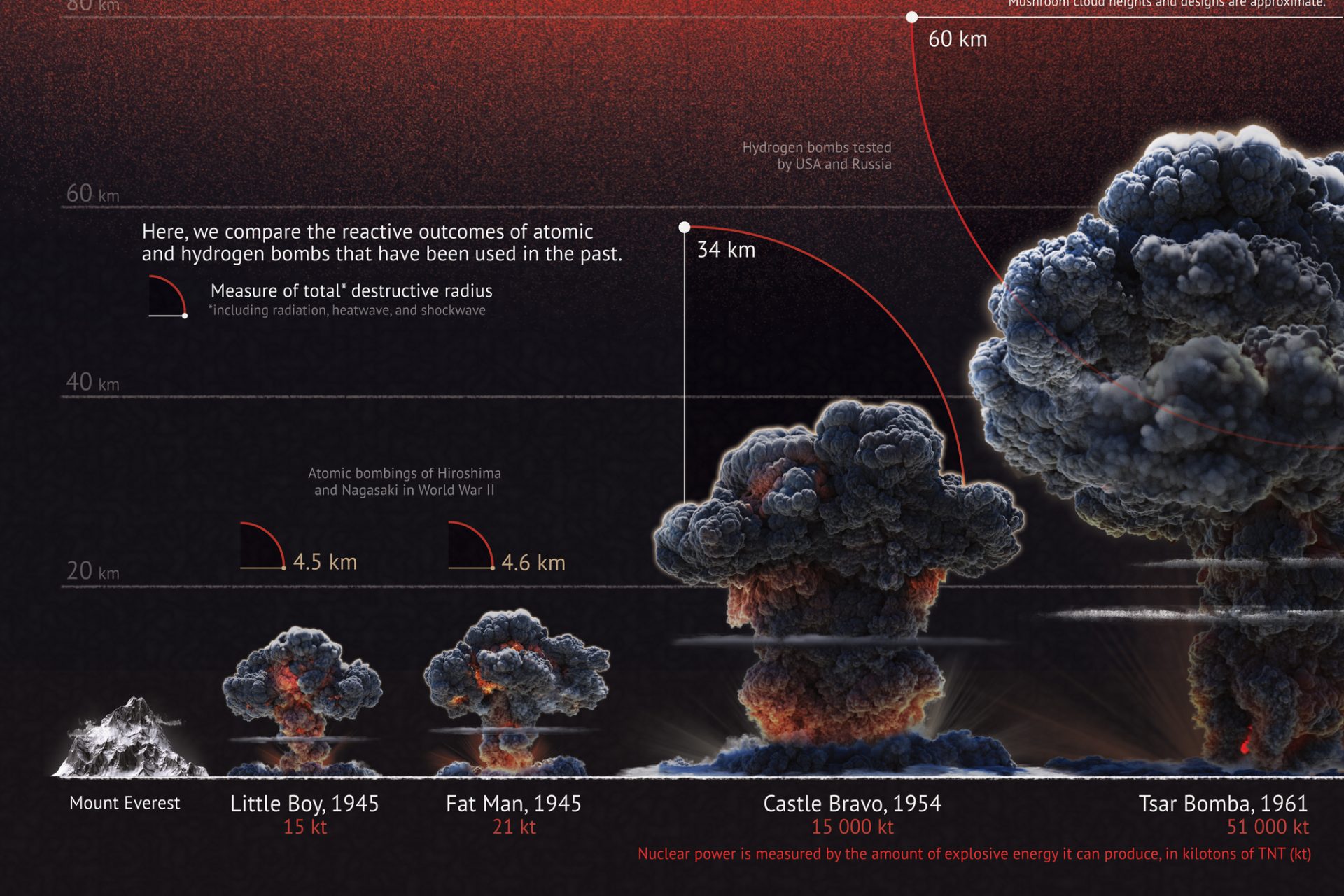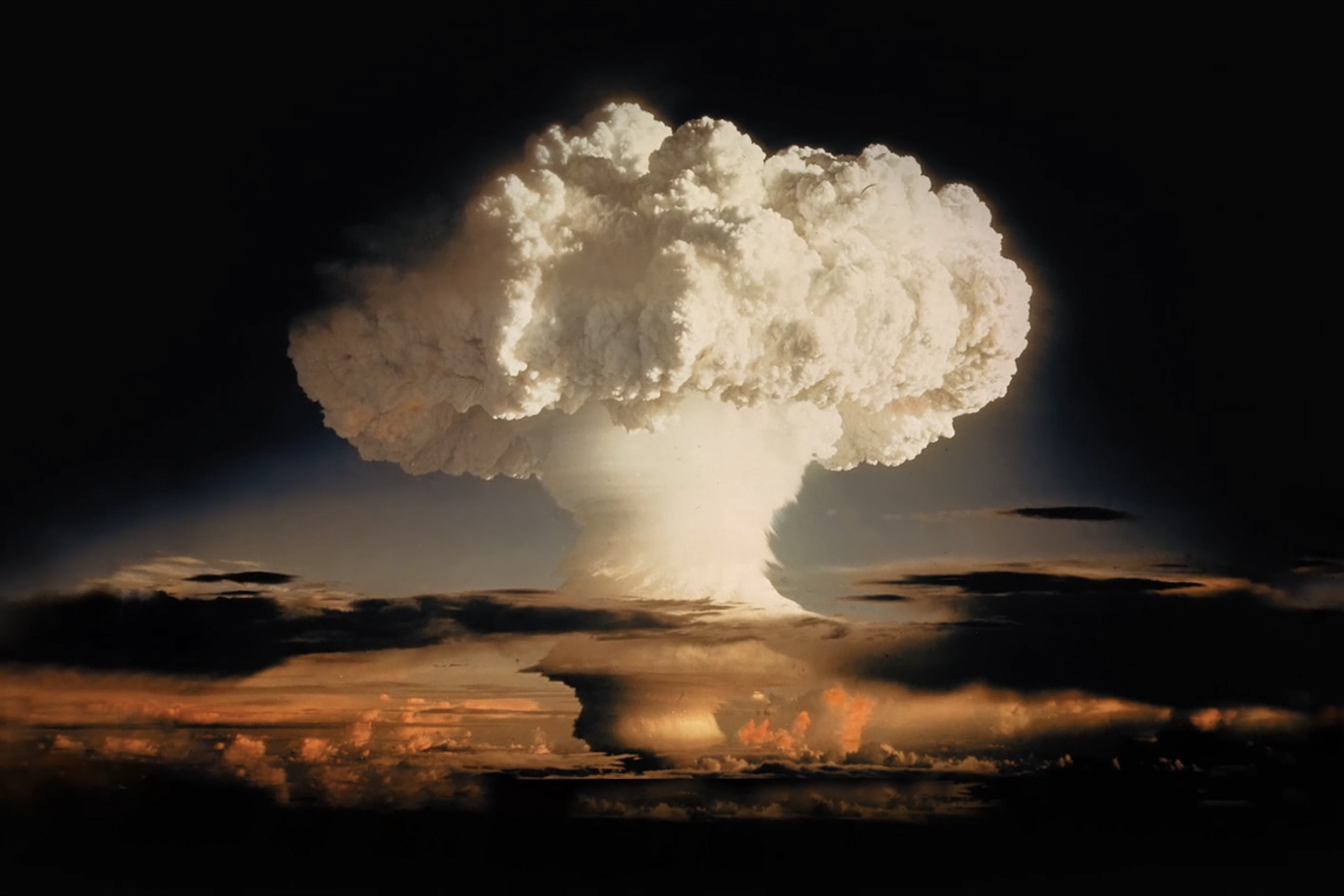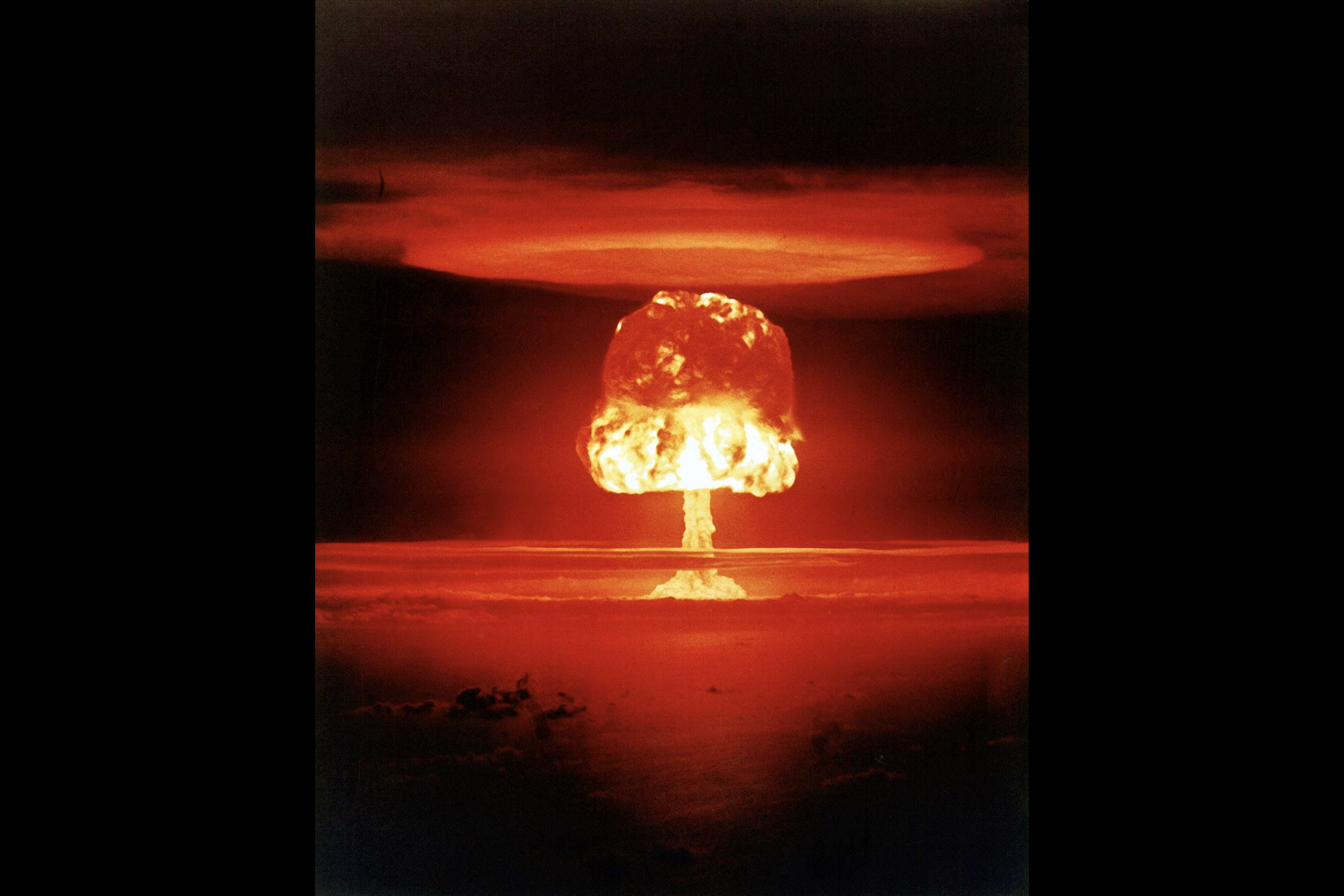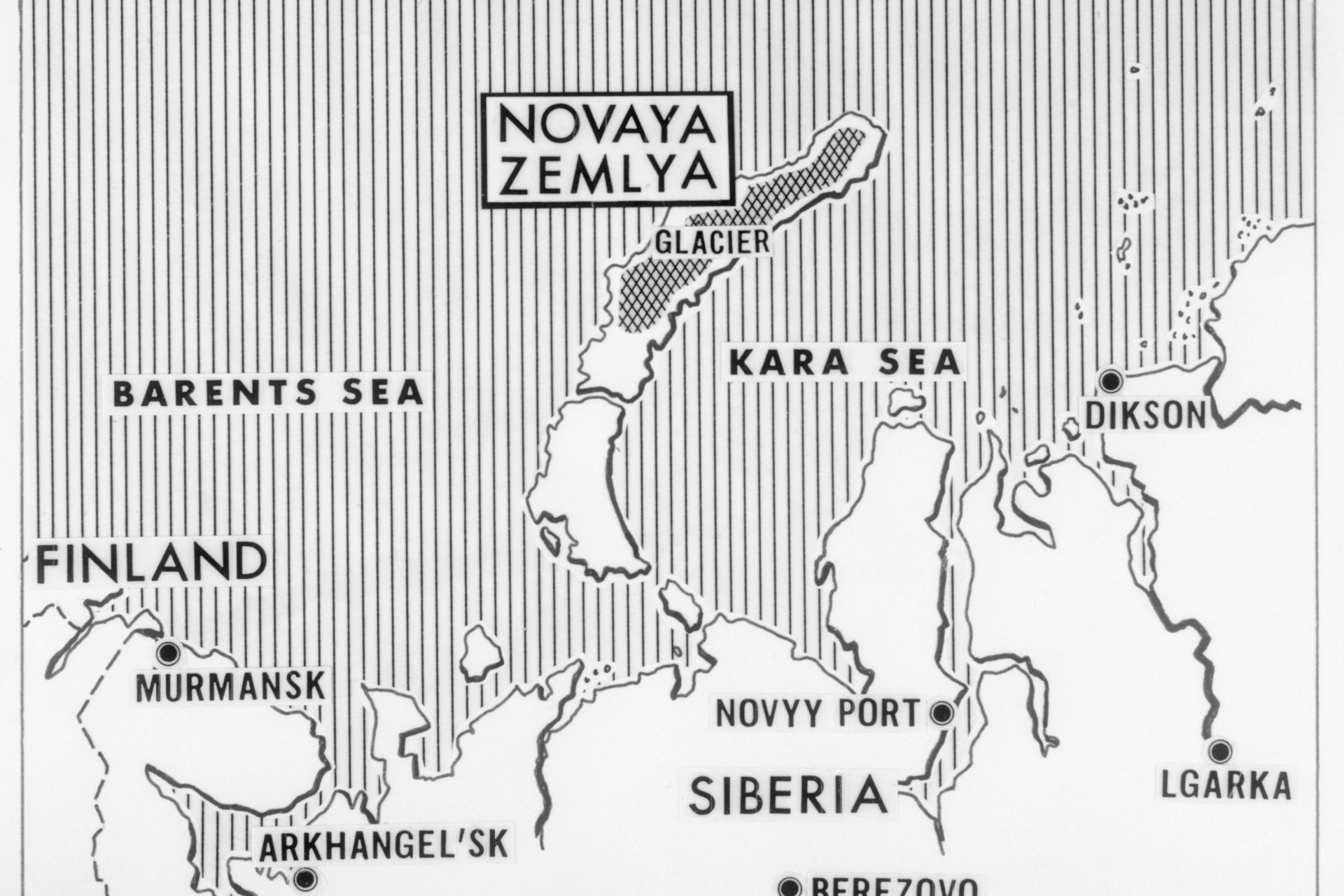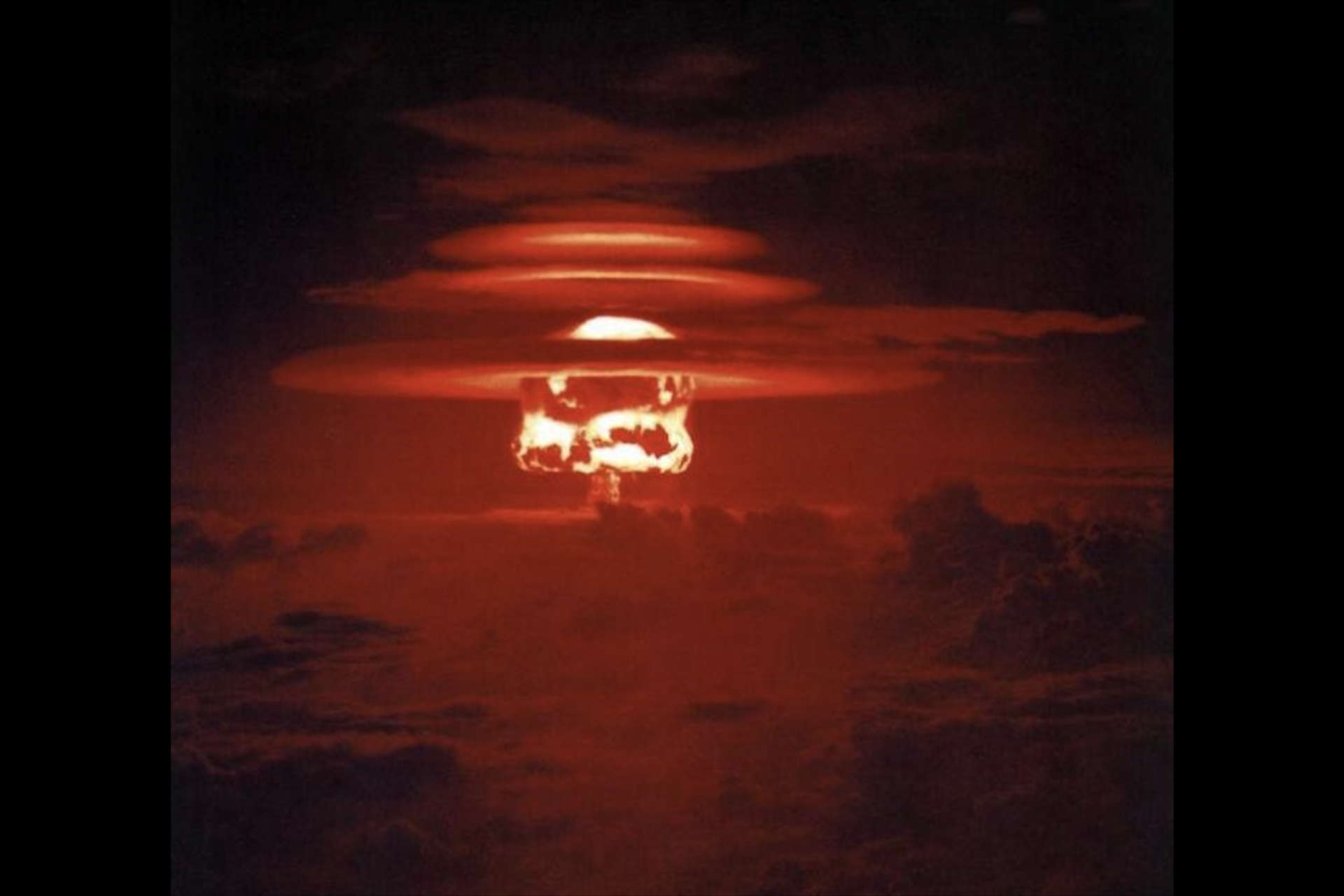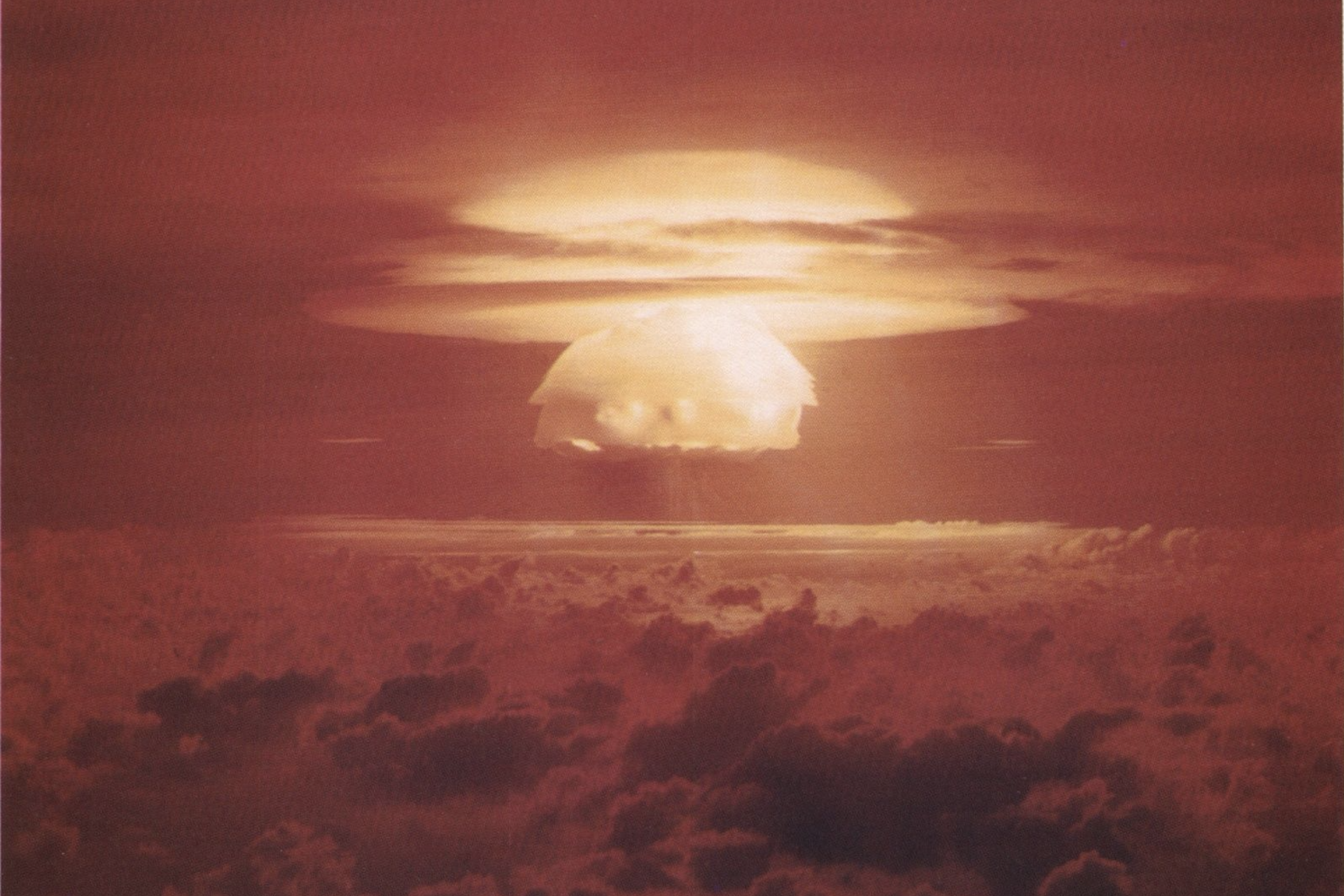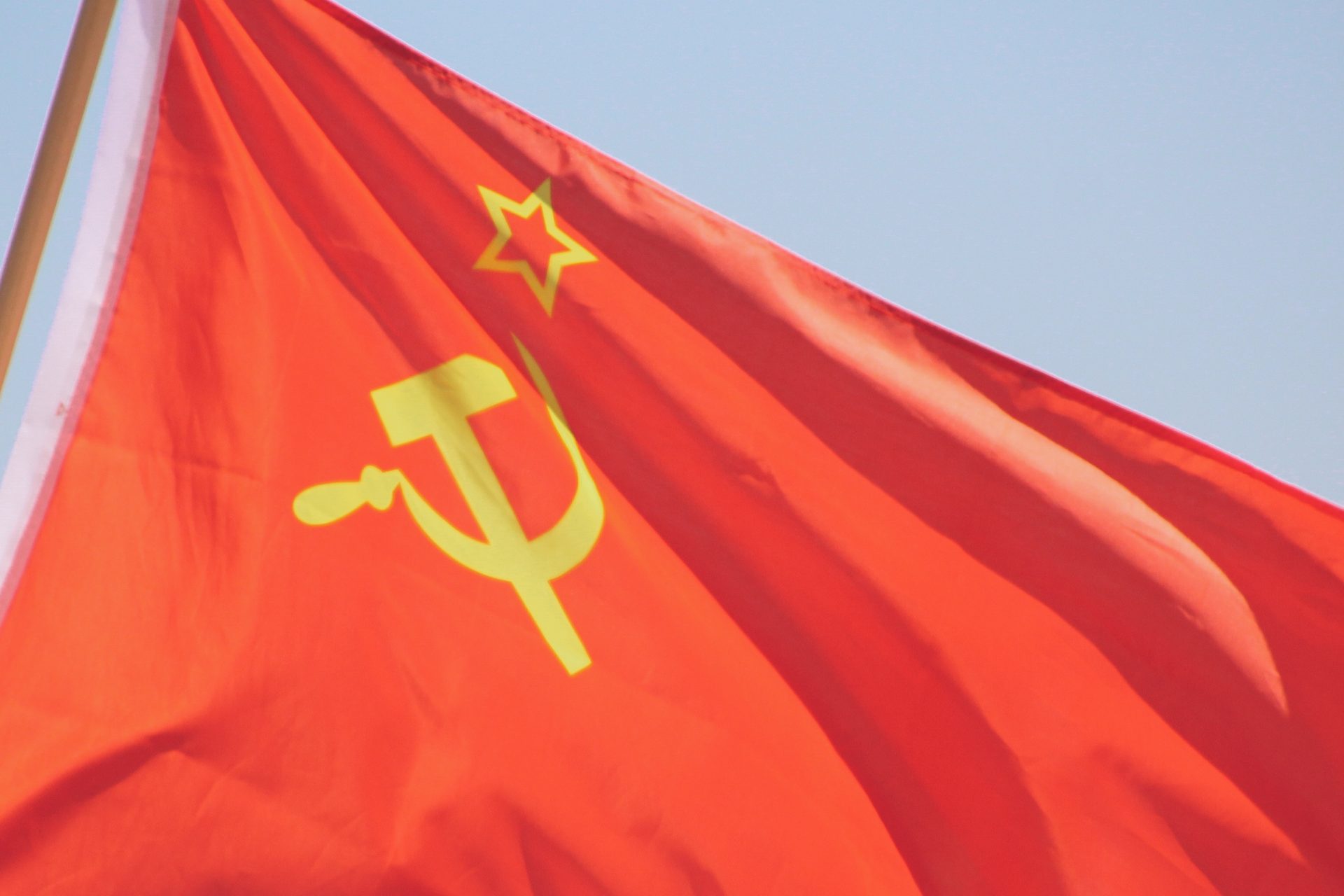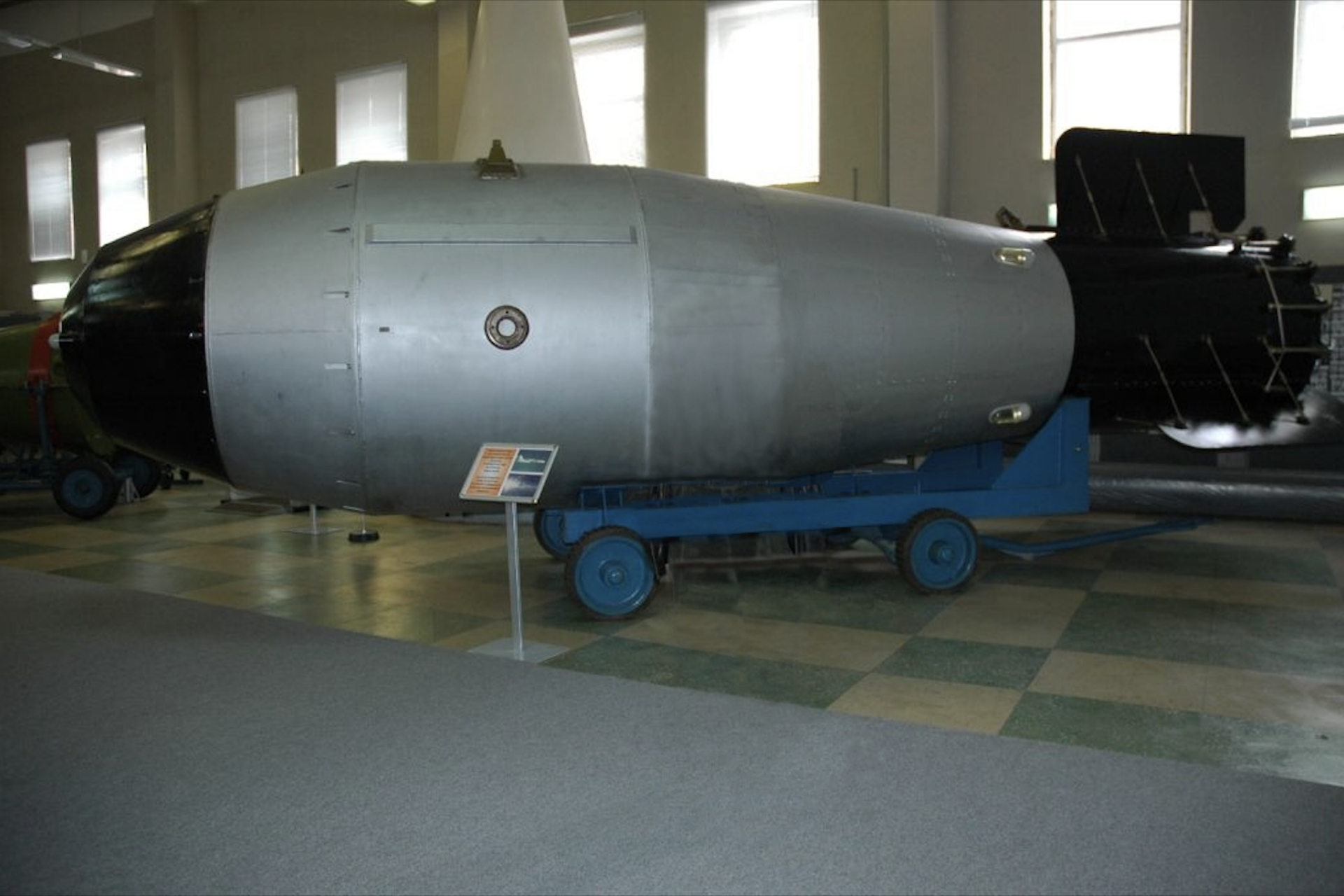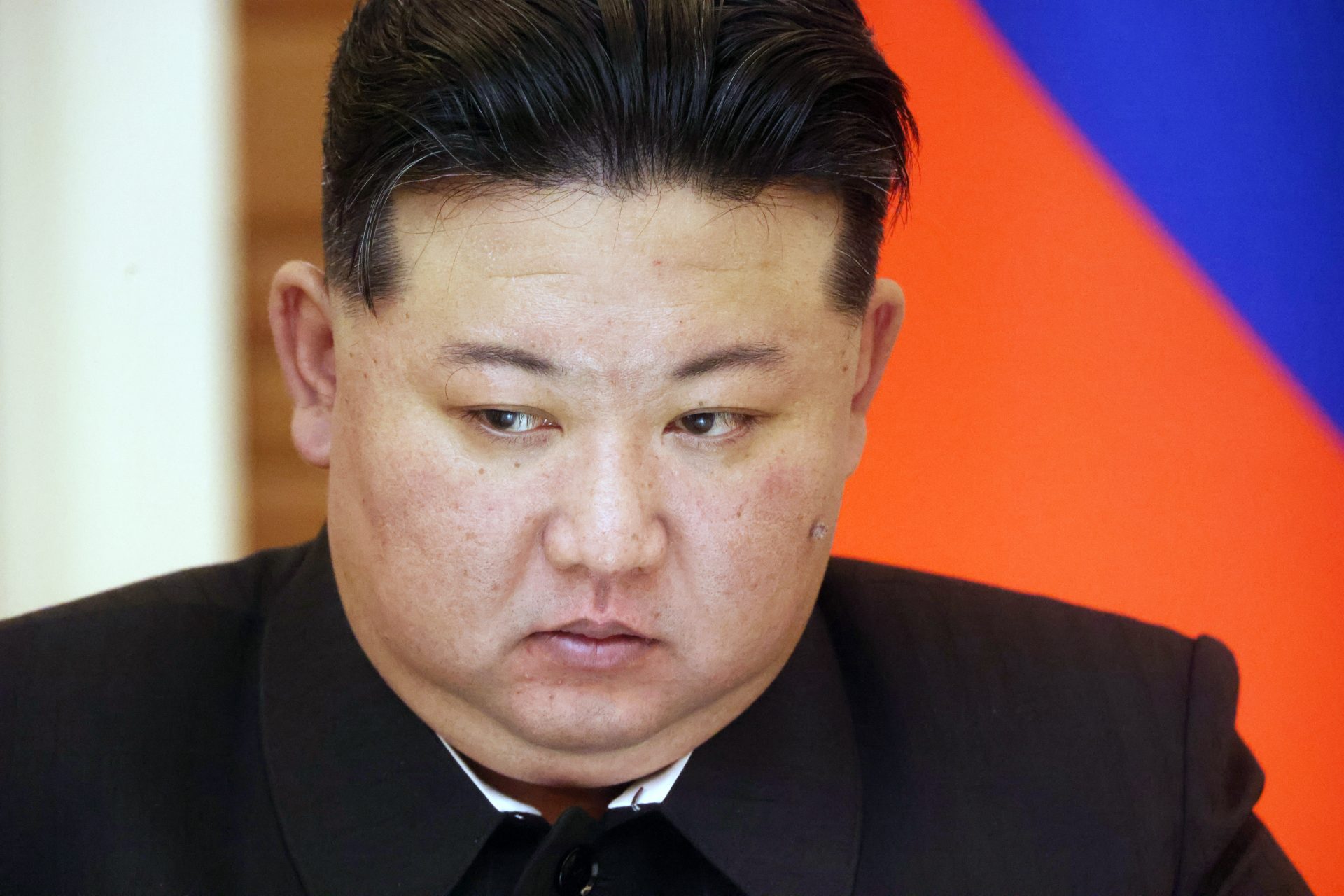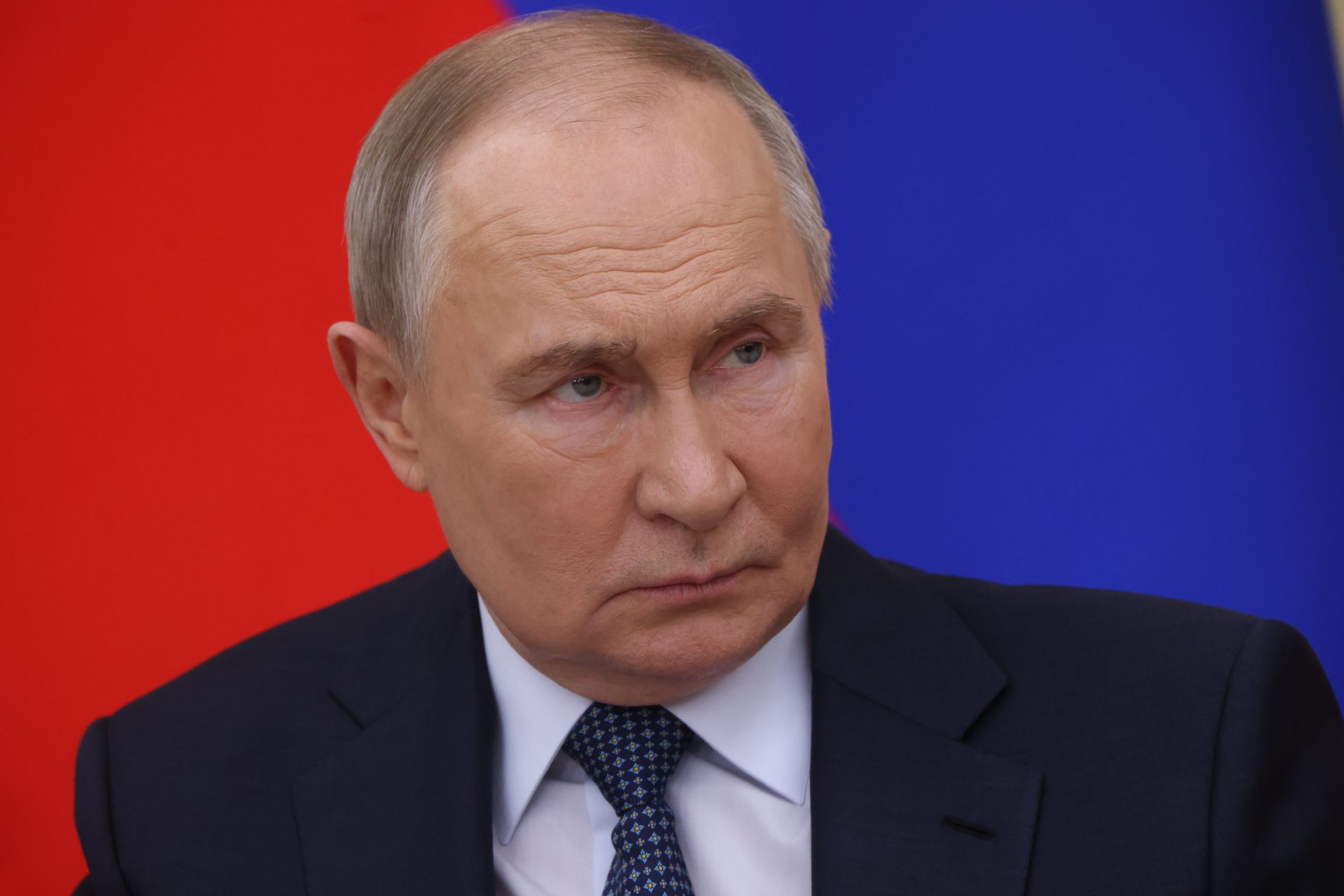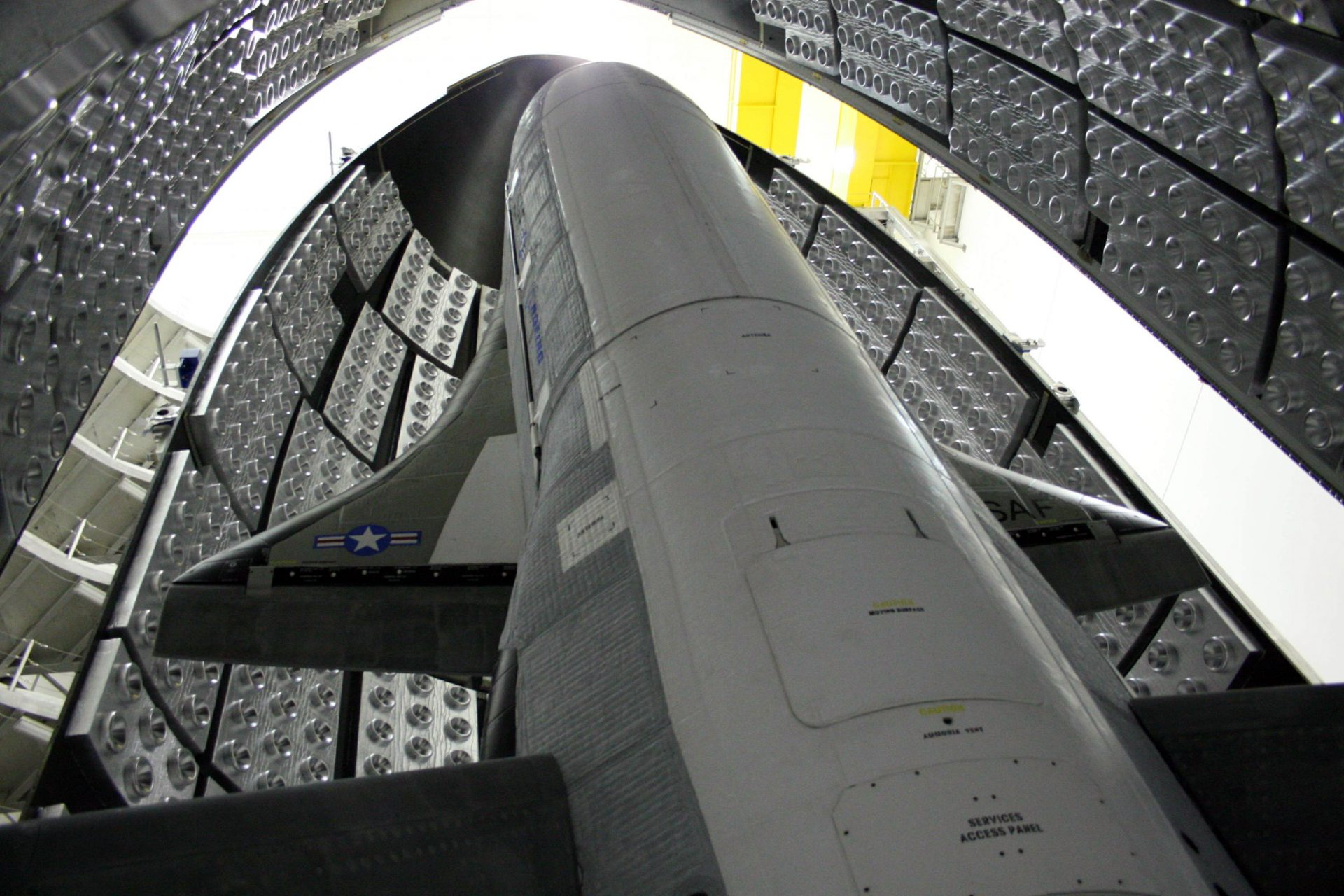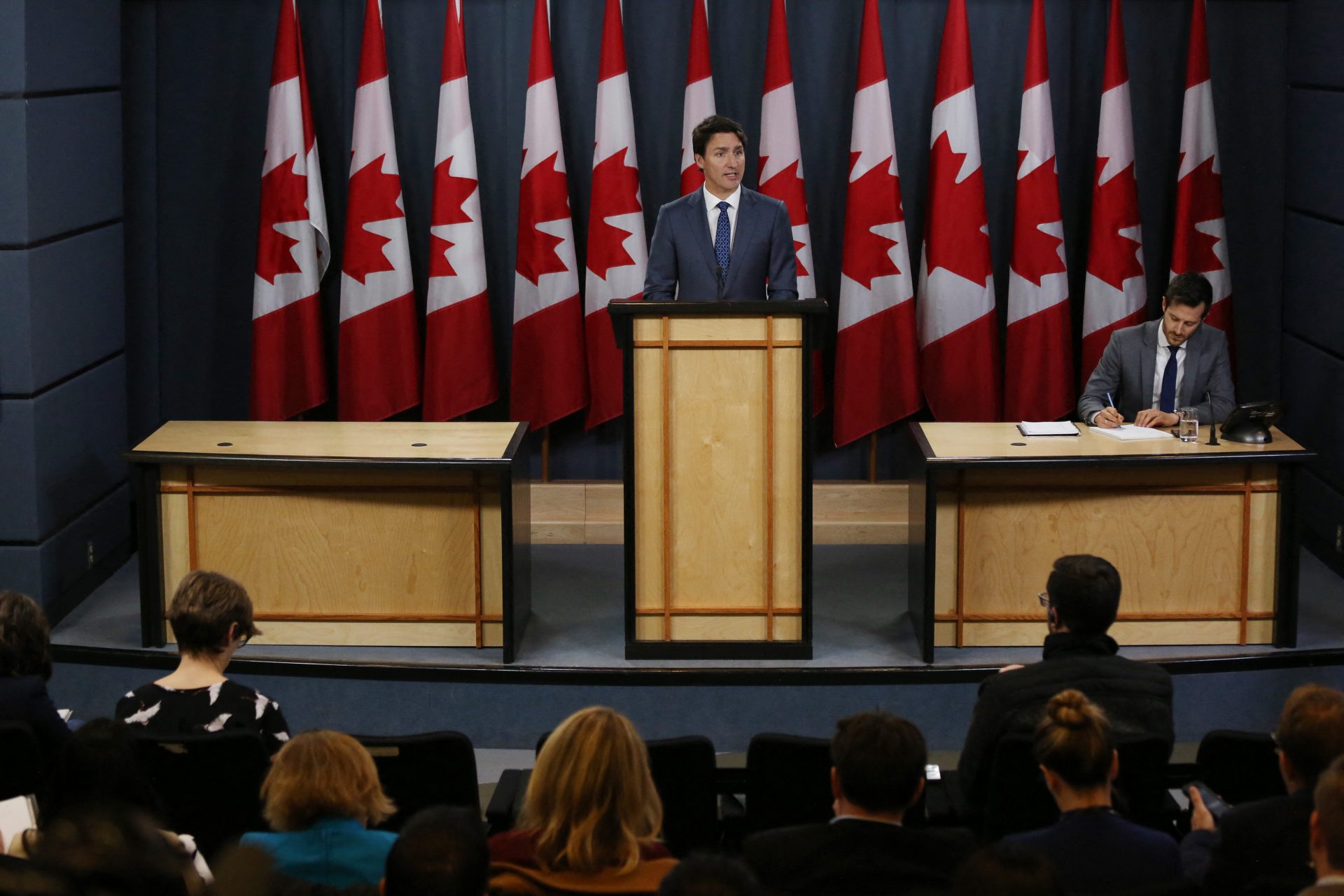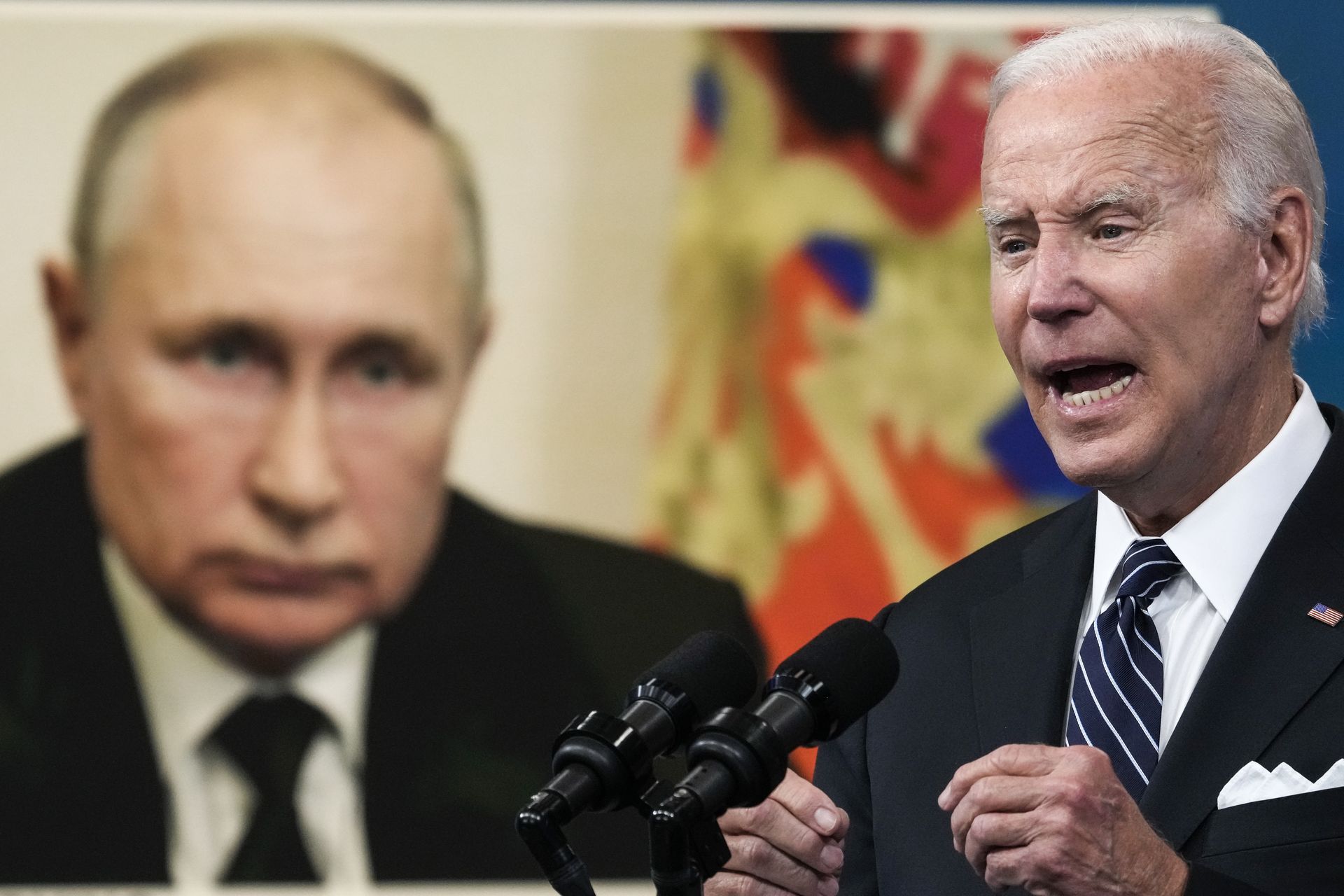History's mega blasts: Exploring the world’s largest nuclear explosions
You may think a nuclear weapon can destroy a city, and you would be right, but humans have developed bombs so powerful that it can be impossible to understand just how big they are without comparing them to the first nuclear bomb detonated.
The ‘Trinity Test’ on July 16th, 1945, in Los Alamos, New Mexico, was the first nuclear explosion in history. According to the U.S. Air Force, the device released a yield of 18.6 kilotons. It’s important to note a kiloton is the unit of measurement used to determine the explosive strength of a nuclear device.
Codenamed Gadget, the device turned surrounding asphalt and sand into a green glass substance called trinitite, and seconds after the Trinity Test explosion, a blast of heat was sent across the desert that knocked over observances.
Photo Credit: Wiki Commons By Federal Government of the United States, Public Domain
Restricted Data, a blog about nuclear history, noted that if the Trinity Test bomb was dropped on Hiroshima today, the site of the first military use of a nuclear weapon, it would still kill upwards of 15,000 people. However, modern bombs are far more dangerous today.
Most modern bombs today are considered low-yield with outputs of 100 kilotons according to the International Campaign to Abolish Nuclear Weapons. But if a single 100-kiloton yield bomb were used on New York City, it could lead to the deaths of over 580,000 people.
Over the course of the Cold War, the United States and the Soviet Union tested nuclear weapons hundreds of times larger than the low-yield tactical and strategic weapons that are in the arsenals of many nuclear-armed countries today, let’s look at the largest explosions.
In 2022, Visual Capitalist compiled a list of the 10 most powerful nuclear explosions that have ever taken place, and the visual graphics website kicked off its list with the 1952 of the U.S. Ivy Operation’s ‘Mike’ bomb.
Mike was special because it was the first hydrogen bomb ever created. It weighed in at 140,000 pounds (63,500kg) and the Ivy Mike test generated a yield of 10,400 kilotons. It had the explosive power of 10,4 million tons of TNT and was 700 times bigger than the Little Boy Bomb dropped on Hiroshima, which destroyed the city.
Photo Credit: Wiki Commons By USDE, Trinity and Beyond: The Atomic Bomb Movie, Public Domain
Operation Castle saw the U.S. test Castle Romeo, a bomb that officials had expected to produce 4,000 kilotons of explosive energy but pushed that figure by double to 11,000 kilotons according to Visual Capitalist. Its explosion is still one of the most iconic nuclear blasts ever photographed.
Photo Credit: Wiki Commons By United States Department of Energy, Public Domain
The Soviet Union tested 57 nuclear bombs in 1961, but one of the most powerful was test #123, which took place at the Novaya Zemlya test area and produced a yield of 12,500 kilotons. The explosion vaporized everything within a 2.1-mile (3.5km) radius.
In 1954, the fifth test of Operation Castle saw the Castle Yankee test, which produced a 13,500 kiloton yield. This was the second most powerful bomb test ever done by the United States.
Photo Credit: Wiki Commons By Federal Government of the United States, Public Domain
Castle Bravo was the most powerful bomb ever tested by the United States. It was the first in the Operation Castle series of tests and took place in 1954. It produced a yield of 15,000 kilotons. The mushroom cloud of the bomb rose 25 miles (40km) into the sky.
Photo Credit: Wiki Commons By United States Department of Energy, Public Domain
Soviet tests #173, #174, and #175 all took place in 1962 and each produced a yield of 20,000 kilotons. The Soviet Union tested 78 in 1962 but no photos or video from the tests have been released due to the secrecy that surrounded them according to Visual Capitalist.
Photo Credit: Wiki Commons By Central Intelligence Agency, Public Domain
The Soviet Union’s test #219 in 1962 was the second-largest nuclear weapon exploded on Earth at a yield of 24,200 kilotons. However, this explosion paled in comparison to the bomb that took the number one spot: Tsar Bomba.
Tsar Bomba was labeled Big Ivan and was detonated in 1961. It had a yield of 50,000 kilotons and was so powerful that it generated a 5.0-5.25 magnitude earthquake in the surrounding area according to Visual Capitalist. The Soviet Union originally designed Tsar Bomba to have a yield of 100,000 kilotons but it was later cut in half by officials.
Photo Credit: Wiki Commons By Hex, Own Work, CC BY-SA 3.0, Image of Tsar Bomba-type casting on display
More for you
Top Stories





